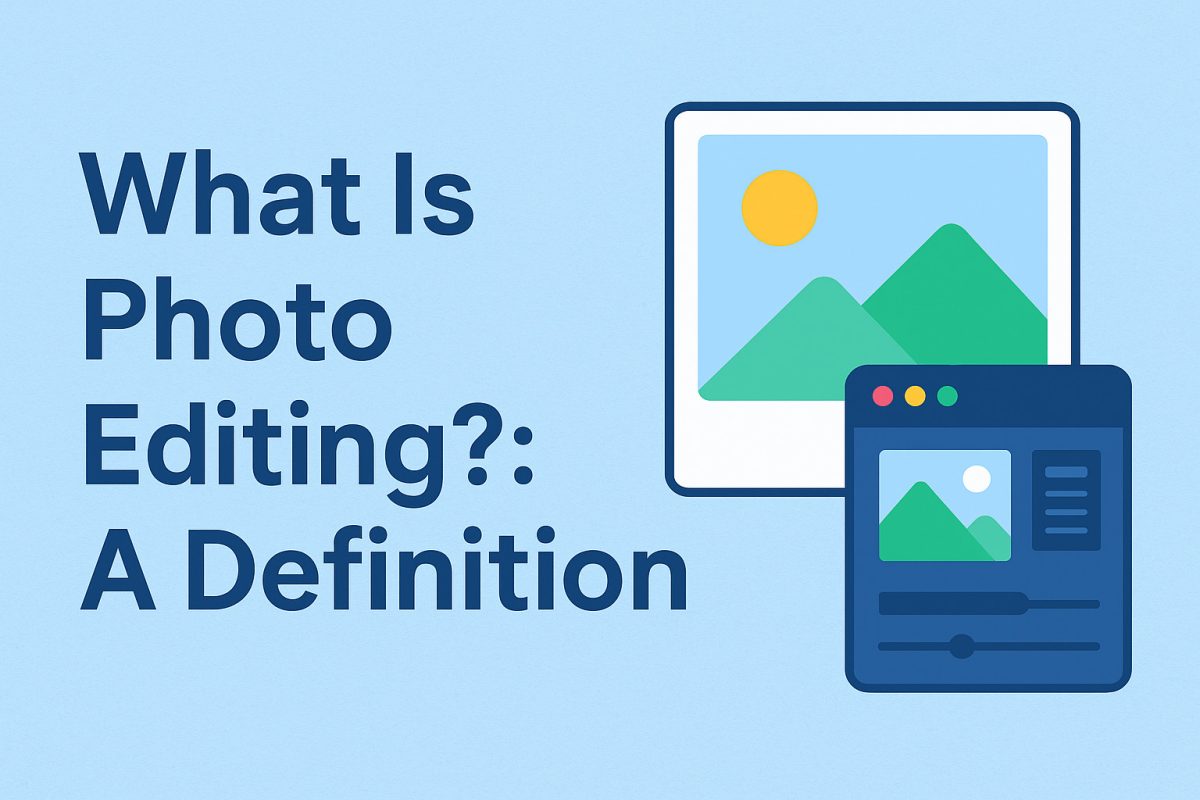Photo editing is a vital part of digital imagery today. Whether you are a content creator, an online seller, or simply someone who enjoys photography, editing helps transform ordinary photos into visuals that are more polished, professional, and effective in communication.
What Is Photo Editing?
Photo editing is the process of enhancing, correcting, or modifying an image using software or manual techniques. It includes simple adjustments such as cropping and resizing, as well as more advanced tasks like retouching, color correction, or background removal.
Other common terms for photo editing include:
- Image editing
- Photo enhancement
- Post-processing
- Photo manipulation
- Photoshopping
Why Is Photo Editing Important?
High-quality images influence how people perceive brands, products, and even personal identities. Editing allows you to:
- Improve image clarity and visual appeal
- Ensure consistency across photos
- Highlight brand identity
- Correct lighting and exposure issues
- Optimize images for print, social media, or ecommerce platforms
For businesses, especially in ecommerce, editing directly impacts product perception and sales. A well-edited image can make the difference between a customer clicking “buy” or scrolling past.
Types of Photo Editing
Photo editing ranges from basic fixes to highly technical adjustments:
Basic Techniques
- Cropping & Straightening: Refines composition by focusing attention on the subject.
- Resizing: Adjusts dimensions for different platforms.
- Sharpening: Enhances edges and details.
- Contrast & Exposure Adjustment: Balances brightness and depth.
- White Balance: Corrects color tones.
- Background Removal: Isolates subjects for ecommerce or marketing purposes.
Advanced Techniques
- Retouching: Smooths skin, removes blemishes, or adjusts details in portraits.
- Clipping Paths: Extracts subjects from complex backgrounds.
- Special Effects: Adds elements like shadows, reflections, or overlays.
- Photo Masking & Layering: Reveals or hides portions of an image.
- Photo Stitching: Combines multiple images into one seamless picture.
Pixel Editing vs. Parametric Editing
- Pixel Editing: Alters the image at the pixel level, making permanent changes.
- Parametric Editing: Uses recorded steps to modify the image non-destructively, preserving the original file.
Many professionals use parametric editing first, then apply pixel editing for final refinements.
Photo Editing in Practice
Different photography niches require different editing techniques:
- Product Photography: Focus on background removal, resizing, and color accuracy.
- Sports Photography: Enhance sharpness, remove distractions, and balance lighting.
- Portraits & Headshots: Retouch skin, adjust tones, and refine backgrounds while maintaining authenticity.
Learning Photo Editing
Today, you can learn photo editing through tutorials, online courses, and apps. Popular tools include Adobe Photoshop, Lightroom, GIMP, Snapseed, and VSCO. Many offer both beginner-friendly features and professional-grade functions.
Conclusion
Photo editing is more than just a creative tool—it is essential for communicating ideas, building trust in brands, and presenting visuals at their best. Whether you are editing for personal projects or professional use, mastering both basic and advanced techniques helps you achieve your goals effectively.

